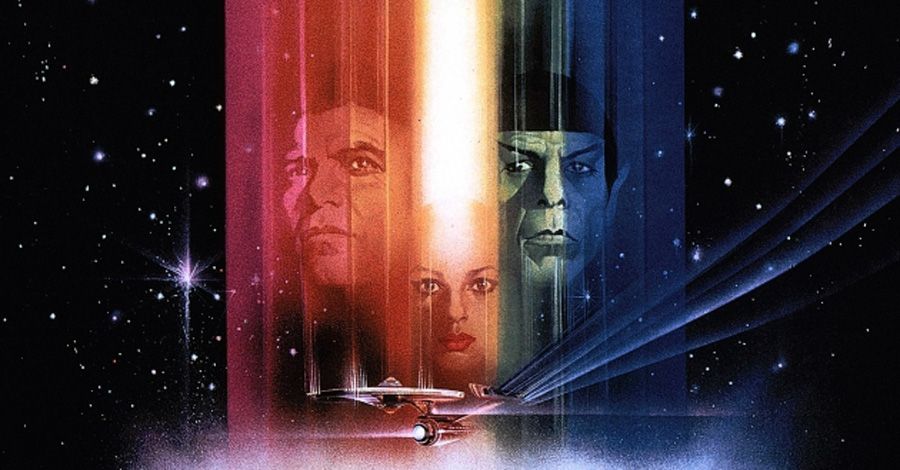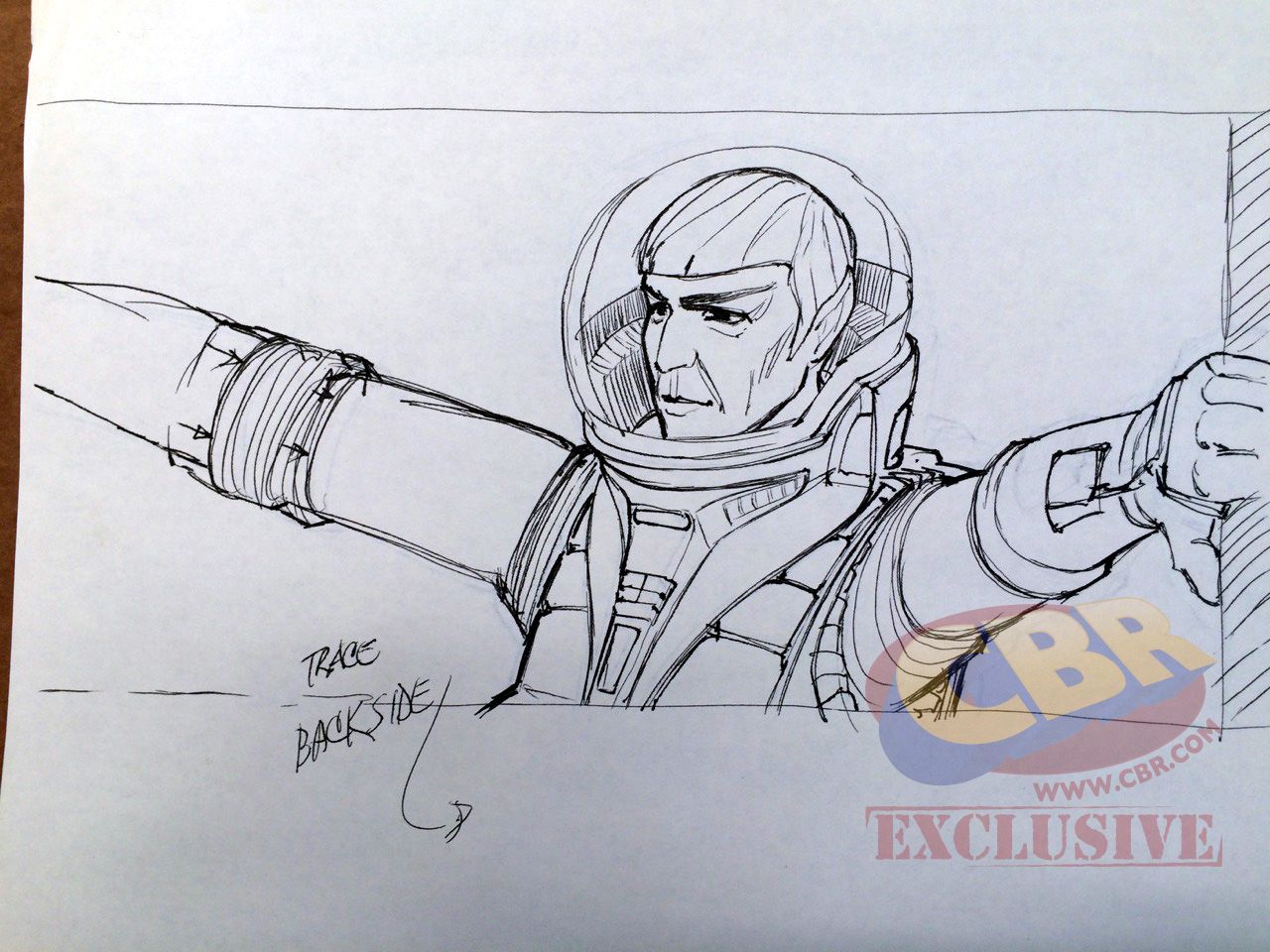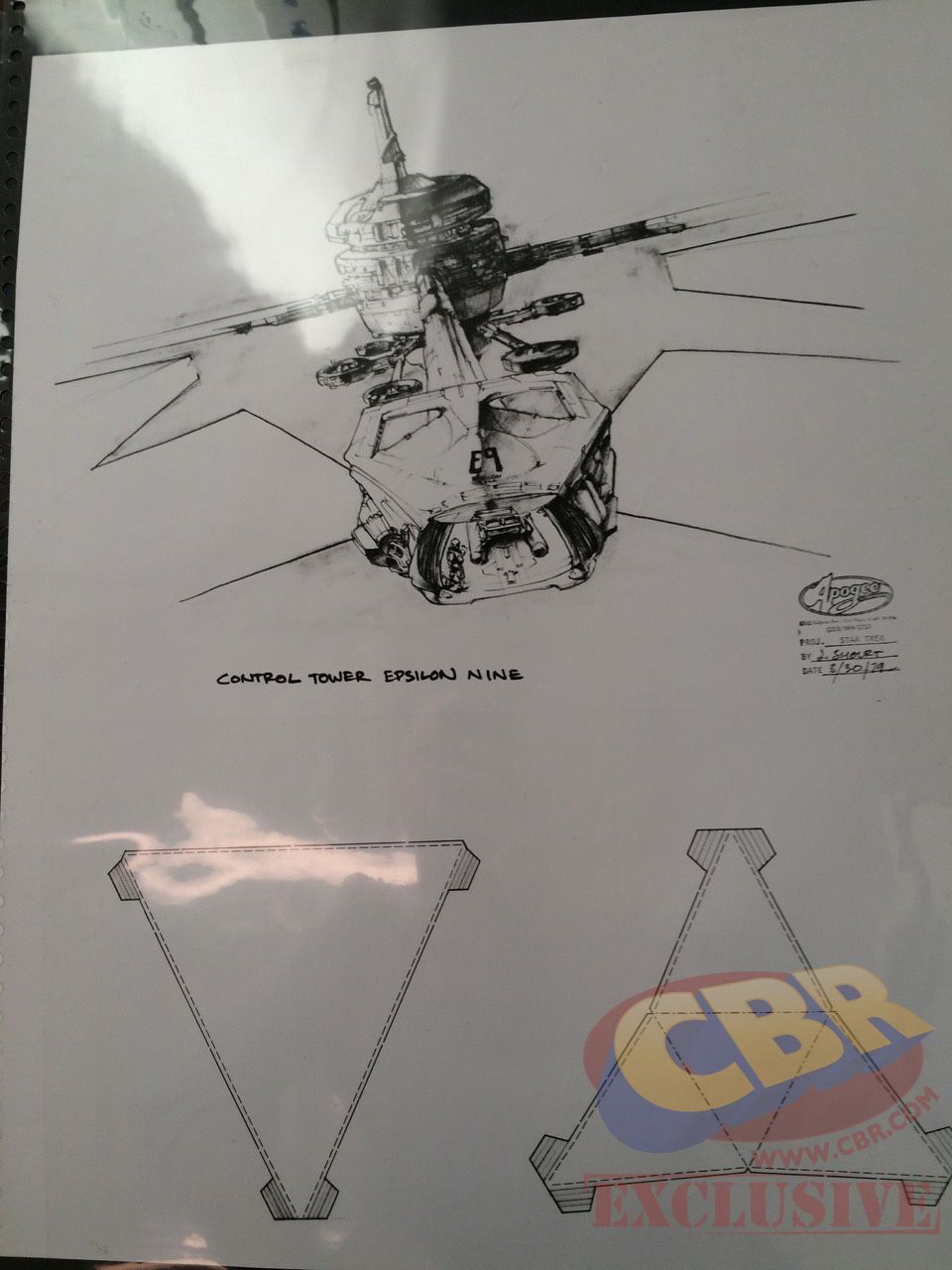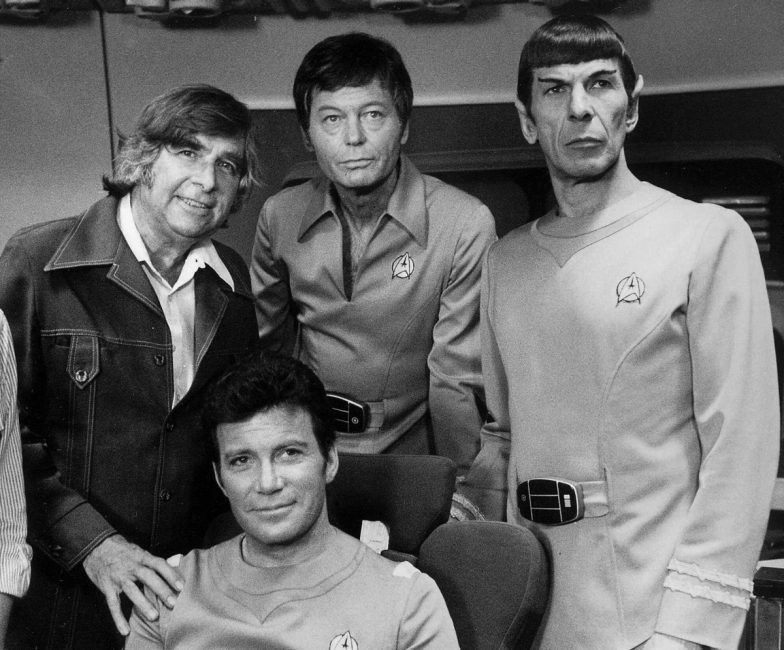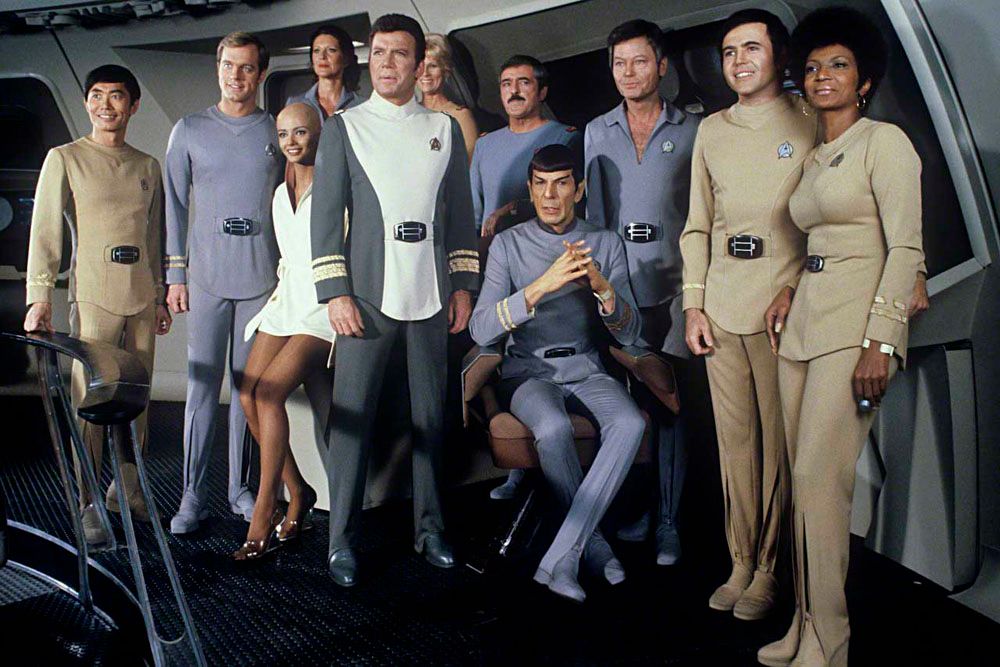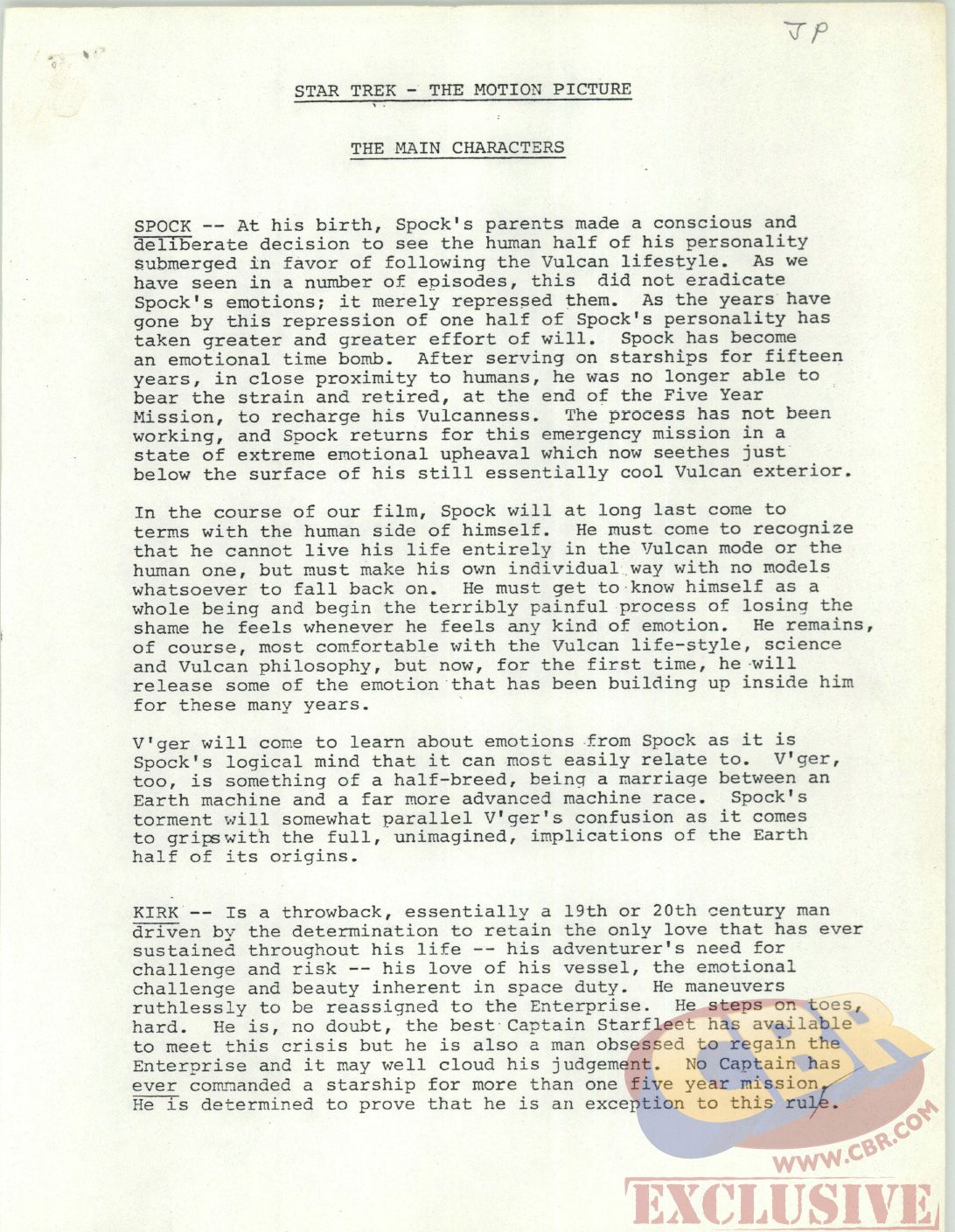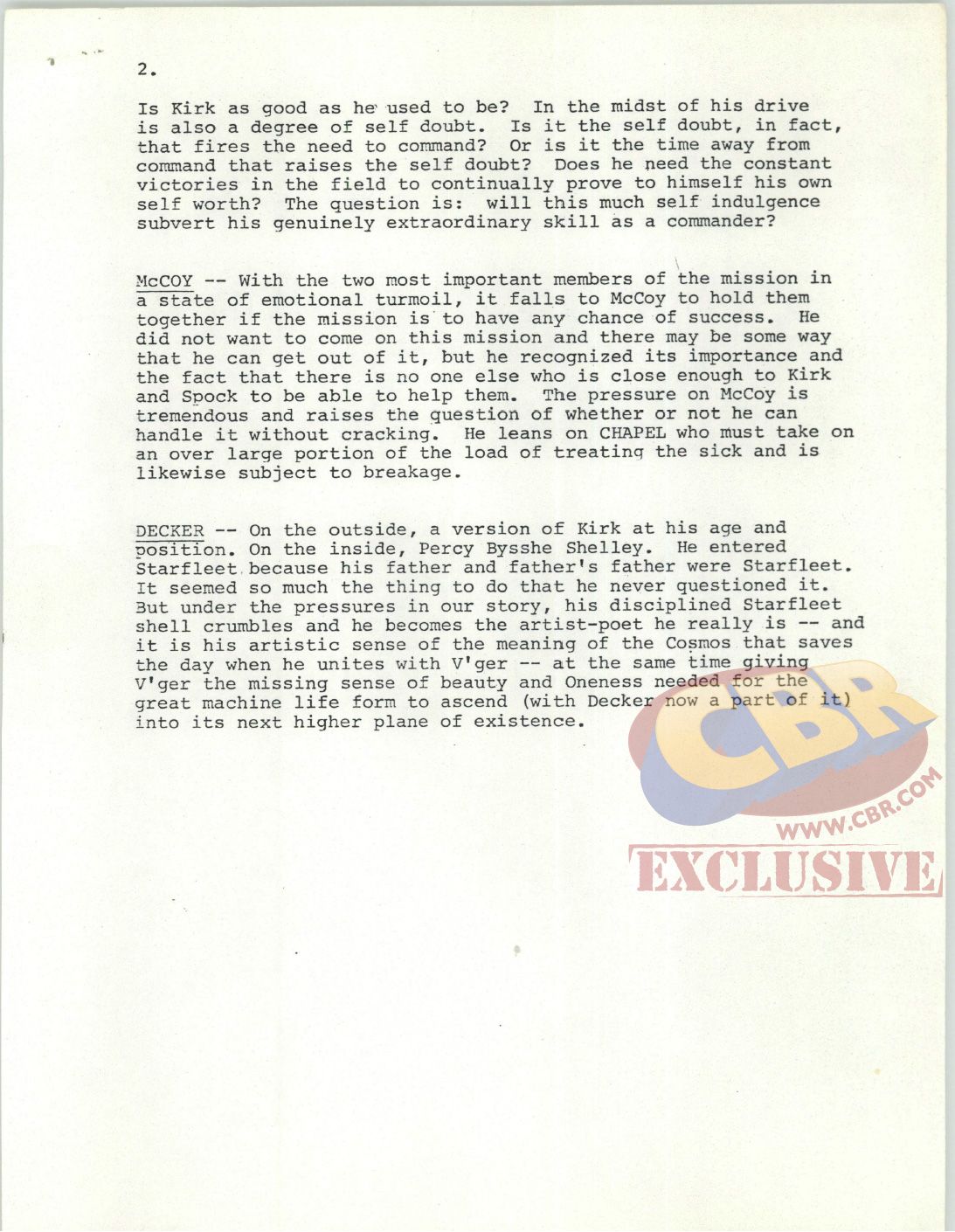In the nearly 50 years since “Star Trek” debuted on television, the iconic sci-fi franchise has become ingrained in the daily lives of generations of fans. To celebrate the golden anniversary of Gene Roddenberry’s visionary take on the future of human space exploration, Roddenberry Entertainment has taken that everyday connection to a logical – and literal – conclusion.
Each day throughout 2016, the company now headed by Roddenberry’s son Eugene “Rod” Roddenberry and COO Trevor Roth is presenting the 366 Project, excavating deep into the extensive – even exhaustive – archives of the late “Star Trek” creator to reveal a new image or artifact from the franchise’s rich five-decade history. New treasures from the vaults, ranging from rare behind-the-scenes photos to concept art to early scripts, are shared daily on Roddenberry.com and the company’s Facebook page.
As a sampling of the wealth of discoveries rooted in “Star Trek” lore, Roddenberry Entertainment has provided SPINOFF with an exclusive first look at artifacts from 1979’s “Star Trek: The Motion Picture,” the franchise’s maiden big-screen voyage. The pieces include concept art of Spock in his extravehicular environmental thruster suit, a dynamic drawing of the Epsilon IX space station ultimately consumed by the enigmatic V’ger; and a two-page description of the film’s principal characters – Kirk, Spock, McCoy and Decker – including where they start and how they progress as the story unfolds.
Roth, who along with Rod Rodenberry will serve as executive producer of the new “Star Trek” series premiering next year on CBS All Access, joined SPINOFF for a detailed look at the 366 Project, as well as an overview of what’s ahead for the franchise’s 50th year.
Spinoff Online: Tell me about the fun that you guys at Roddenberry are having slow-dripping out these great archival finds.
Trevor Roth: I mean, if you’d call finding amazing stuff that no one’s ever seen before and finding insights to one of the greatest shows ever fun, then yeah, we’re having it.
No, listen, it’s fantastic. I always tell people when we talk about “366,” that one of the great joys of our founder Gene Roddenberry is that Gene kept everything. Of course, one of the most frustrating things about Gene is that he kept everything. It’s literally taken us years to go through this stuff, and we are not done, even to date, with everything and kind of seeing what we have and what we can share and all those kinds of things.
The “366” campaign was meant to really honor “Star Trek,” its anniversary, and to share something with the fans that we knew we could share that really no one else could. And the insights that we found are captivating and interesting and surprising, and sometimes just fun. But they really round out at least our vision of “Star Trek” in a way that even we had not sort of understood before. So it’s as much fun for us as it is for anybody out there.
What are some of the more interesting, unique or just downright unusual items that you’ve put out there thus far – some of your favorites?
Thus far, I have personally found a lot of the pictures, either behind-the-scenes stuff, or just like something that you weren’t aware of, as far as like off-screen kind of things that really capture a moment. Especially because a lot of the pictures are in black and white, so it gives you that really cool feeling of nostalgia and kind of what it must have been like – because to be honest, this is before my time on this Earth! And because of that, you always get to sort of envision of imagine that time period when Hollywood was different, and the making of the show is going on, so I really enjoy those.
I also will say that I am sort of mesmerized by the few that we’ve found that are correspondence between Gene and someone else that is, like, amazing. When you're talking about him and Isaac Asimov chatting about “Star Trek,” or something from Arthur C. Clarke, just the fact that they were talking to one another about anything, but then to have it be any kind of reference to “Star Trek” itself and know that these were his patriots, these were the people he went to for opinions, and that there really was almost this perhaps Rat Pack in my mind – of course, I embellish in my mind! – but this Rat Pack of science fiction geniuses talking to one another on an ongoing basis about “Star Trek,” and/or other things, just brings me to a place of excitement.
So those are the things that kind of jump out at me right off the bat. But honestly, every day I look at it, and you know, I am not versed with what’s coming out the next day – I don’t always know; I could look, but I don’t always. So every day I look at it anew, too, and I’m like, “Oh yeah – that thing!” Or, “Oh, my God, I didn’t see this one before!” So I, just like you, get excited every day about what might be coming out.
The material that we’re debuting on SPINOFF pertains to development items from “Star Trek: The Motion Picture.” Can you give me a sense of where that fit in Mr. Roddenberry’s sense of personal accomplishment? Now we see showbiz franchises revived all the time, but he was essentially pioneering that, on top of all the other stuff that he pioneered, by bringing a defunct TV show to the big screen ten years after it was cancelled.
I’ve seen, and I don’t remember if we’ve released things that speak to this, but I will tell you from my experience in looking at all this stuff and from my knowledge of the history of it, which speaks to the fact that “Star Trek” had gone away, of course, and while they were talking about bringing it back in [the proposed sequel TV series] “Phase Two” and things of that nature, what prompted the movie probably most importantly was “Star Wars” coming out. And people recognizing that there’s really a place for this kind of genre in movie theaters to be commercially successful.
With all that as sort of a backdrop if you will, I know that Gene, in a number of cases, mentioned “Star Trek: The Motion Picture,” and thought “Wow, let’s really see where I can take this thing now that it’s got some money behind it.”
Before this, the first three seasons of “Star Trek” were, “How are we going to get this done on this budget, and we’re trying to make aliens and different worlds and all this kind of stuff?” I think that Gene saw “Star Trek” the movie as a very liberated arena for him to now bring this universe into. And I think that that allowed him to kind of stretch his legs with it a little bit and see what could be done.
So whether or not you liked or disliked that movie, I think that the change in venue from the small screen to the large, and what came along with that, was something that was probably very exciting to Gene, a reinvigoration of “What can I do with this now, in this place, in this time?”
Tell me, in this golden anniversary year, what’s going on over at the Roddenberry offices? We’ve got a new feature film coming out. We’ve got a new TV show in the planning stages. How is this year a little different for you guys as opposed to other years?
I think this year to us is like us putting on glasses with 50th-anniversary lenses, you know what I mean? And that we constantly look through these glasses for the entirety of the year. Such that everything we’re doing, whether it be “Star Trek” or non-“Star Trek,” whether it be oriented towards something we’re doing with CBS or on our own, everything is colored by the fact that we’re in this 50th-anniversary year.
Because it’s such a momentous occasion, it’s such an amazing accomplishment, and because we’re so proud not to have just lasted 50 years, but to be relevant today and to be doing things that are going to continue on for 50 years to come, as opposed to just kind of looking backwards, to be able to look forward in that way, is something that is sort of throughout everything we do every day, in that way. It’s very exciting and there’s a pressure to it of course, but overall, we’re just so happy to be able to celebrate it.
What does it means to see “Star Trek” sort of coming home to TV, but in this sort of new cutting-edge streaming service way, and returning to the kind of storytelling that was so groundbreaking in the ‘60s, the ‘80s and ‘90s.
Look, I think it’s so appropriate for “Star Trek” to be coming home to television. I think that television is where “Star Trek” began. Television is where “Star Trek” can really have a tremendous amount of depth and long journeys because it allows for the time of a viewer to take those with any given character.
And because of that, it makes perfect sense for, on the 50th-anniversary year, us to be heading into a new journey in the television medium. I think interestingly, as much as we say television is also appropriate for “Star Trek” to be pushing boundaries in regard to what television means these days. Because obviously with the advent of sort of digital watching and the Hulus and the Netflixs, and now CBS All Accesses of the world, for “Star Trek” to be on the forefront of that, perhaps pays homage to what “Star Trek” is, not only in content, but also what it was meant to be by Gene, our founder, when he thought of what “Star Trek” can be and how it can push boundaries and break molds.
I think for it to be part of that story 20, 30 years from now when they say, “Oh, this is when certain things changed in the area of television,” is absolutely appropriate and again, something we’re very proud of.
Let’s talk about the legacy of Mr. Roddenberry as a visionary, both in television and humanist terms. You’ve got a great creative team from many different “Star Trek”-related backgrounds coming onto the new show, but what is the essence, in the minds of the team over there at Roddenberry, of what the essential part of “Star Trek” was that Gene has given us that you want to see upheld?
I think that more than anything, Gene and “Star Trek,” and even beyond “Star Trek,” and the name Roddenberry is meant to represent an exploration of the human experience and the human condition. And I think that in everything we do, including what we hope to achieve with the new show, the exploration of what it means to be human and the trials and tribulations – or Tribble-ations – that come with being human, are something that are, they’re evergreen.
As much as things change in our world and therefore the story of those can change, I think the ability for audiences to connect with that exploration, and hopefully to question and to learn about themselves, and to think about “What would I do if …” and all those kinds of things are what Roddenberry is about.
And I think seeing that there is a belief in humanity itself in that exploration or that journey, is really something that I would hope is brought to anything that we have to do with, and especially the new “Star Trek.”
Obviously, “Star Trek” has a very devoted and long-standing fan base. Since you’ve been releasing these archival treasures, tell me about watching the fan response to it. What have you seen? What have you seen the fans getting really excited about as each new little item comes to light in the “366” campaign?
You know, here’s the thing: I have sort of two answers for that. For the sake of daily interaction and sort of consumption of the “366” campaign, we’ve really seen a lot of people enjoy, again, the sort of photos and pictures and imagery, I think those have been the things that people can say, “I love that. That’s awesome.” Seeing Kirk that way, or whatever, has been something that people can quickly really enjoy. And that is the response that we’re getting on a daily basis to those kinds of things.
However, I think when we talk about like things on a more personal level, when I’m able to sit down with someone who has really been a part of the “366” campaign and saying, “What are you enjoying? “ The stories of the text documents, of the things that people are able to delve into and read and really engulf and sink their teeth into, have been the truly meaningful things. Because they are the ones that give you the insight into what people were thinking at the time, and how people were seeing characters or stories or challenges and things of that nature.
So I think it’s really two-fold, and I think, hopefully, as with “Star Trek,” there’s something for everybody in this, depending on what kind of things you enjoy, and perhaps even how much time you have to put to this. But I think all in all, the idea behind it was, again, to provide a new perspective on this 50-year-old legacy and this franchise that really people hadn’t had before this. So hopefully we’re doing a good job of giving some of each, and allowing people to enjoy both those kinds of things.

